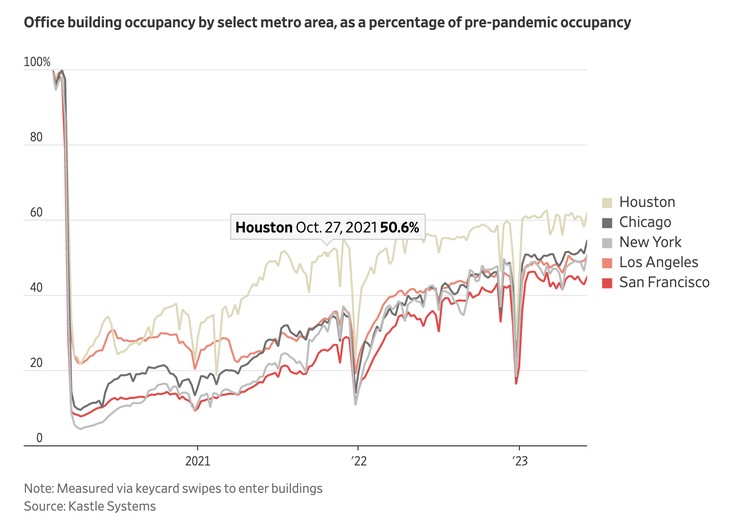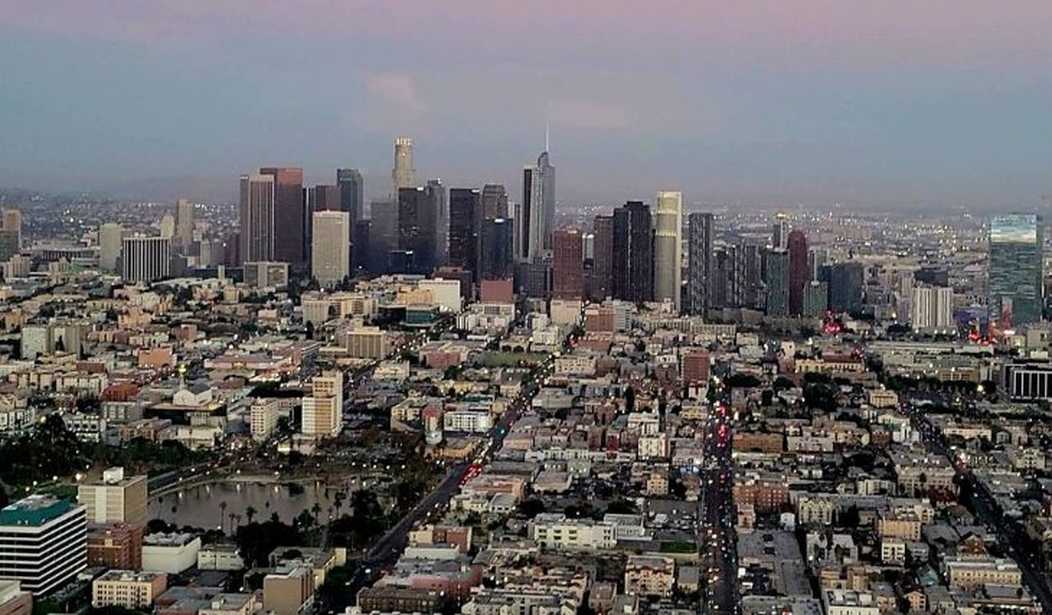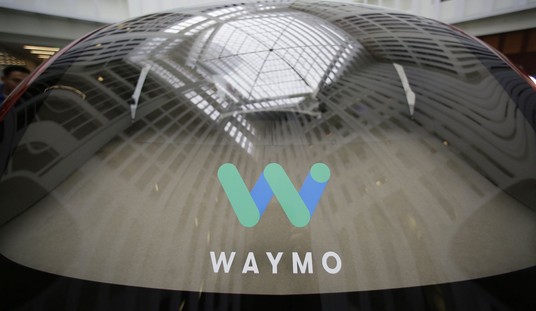Wall Street sure seems to think it is possible.
The Wall Street Journal has a sobering report on the decline of investors’ confidence in all investments city-related.
Whether it is office space, transit systems, or other downtown-related investments, the people who control the flow of money are signaling their lack of confidence in American cities’ financial prospects.
Investors are developing an increasingly dim view of U.S. downtown areas as offices remain half full and employees continue working remotely #WSJWhatsNow https://t.co/h6rW16P9eW pic.twitter.com/vqVUQ42lD0
— The Wall Street Journal (@WSJ) June 20, 2023
This trend is a sharp reversal from pre-pandemic sentiment. Back then, downtowns were all the rage. Booming construction for both office space and housing, a belief that retail would come back in the form of shops catering to the younger and older people flooding into the city centers to live led to massive bets that downtowns would see a revival.
Then 2020 hit. It wasn’t just COVID, although COVID policies put an exclamation point on how risky it is to bet that cities were run by people who had any sense of cost/benefit calculations.
It was also the complete insanity of post-George Floyd public safety policies, where public officials ceded civilization itself to a rampaging mob, and “reformed” criminal justice policies out of existence.
Wall Street is betting against America’s downtowns.
Investors are paying less for bonds linked to New York subways and buses. Downtown-focused real-estate investment trusts trade at less than half their prepandemic levels. Bondholders are demanding extra interest to hold office-building debt.
Downtowns have been a mother lode for American cities over the years, providing billions of dollars in tax revenue along with their distinctive skylines. In turn, investors who bet on downtown office towers, or on the trains and buses delivering workers to them, could generally trust they held a winning hand.
Now, with white-collar workers spending more time in their home offices, a phenomenon that shows few signs of ending, investments linked to downtowns are trading at falling prices in volatile markets.
“You could see this as a slow-motion change or as the beginning of a slow-moving train wreck,” said Richard Ciccarone, president emeritus of Merritt Research Services, a municipal credit-analysis firm. “I hope it’s not a train wreck, but it could be.”
Could be? What, possibly, could reverse the trend in the short term? Office space occupancy rates have been creeping back up, but to see that as a sign of health is similar to noting that putting a coma patient on a respirator has increased his oxygen saturation a bit. The numbers are deadly.

If you started that chart in 2021 you would be impressed at the strong upward growth. Throw in 2020 and you go “Yikes!” In 3 years we are still in the 50-60% range of pre-pandemic levels. Many cities are still struggling to get 35-40% of pre-pandemic level downtown traffic.
Would you put any money into this as an investment? Maybe in the same way that a bankruptcy buyer would pay pennies on the dollar for assets that might appreciate from their current 80% off price.
But build anything new? Are you crazy?
Office buildings are only about 50% as full as before Covid-19 across 10 major metro areas, according to keycard tracking by Kastle Systems, a building-security company. Federal transit data show public-transportation ridership at less than 70% of pre-Covid levels in major metro areas.
President Biden said more than a year ago it was time for America to get back to work “and fill our great downtowns again.” Yet even in the federal workforce, more than half of employees worked remotely at least one day a week last year, according to one survey.
One indication of investors’ wariness of downtowns can be seen in how they price bonds backed in part by commuter fares. The lower a bond’s price, the higher its interest yield. In New York, some bonds partly backed by bus, subway and commuter-train fares yielded a lofty 1.25 percentage points above top-rated municipal bonds on June 14, a spread 56% wider than before Covid, according to ICE Data Services, a financial analytics company.
One major difference between buying US government bonds and most municipal bonds is that the US government can’t default; pretty much everybody else can, including governments. So the cities will have to pay higher rates to entice investors. Construction loans? Getting to be a really risky bet, especially since we are seeing more and more companies just handing the keys to the bank to get out from under bad investments.
A loan to start a shop or restaurant downtown? Yeah, well, good luck buddy.
And, of course, as fewer people want to take the risk to invest in downtowns, the fewer resources the cities will have to clean things up and make them more attractive to investors.
It’s the doom loop.
As can be seen in Detroit, investors don’t have to abandon a region to abandon a city. The Detroit metro actually is thriving and quite entrepreneurial. It’s just that Detroit is the hole in the donut.
All of this is the result of a choice that city leaders have made: they cater to the worst, the most stupid, and the least grounded people in their city. And the businesses who relied upon downtowns actually cut deals with the politicians who catered to the crazies, assuming that the city leaders would hold back the crazy.
But over time the opposite happened: the crazies got empowered and now they aren’t catered to; they run things. Listen to any major city council debate things in a deep blue city and you will see psychotics in charge. My own city council voted to defund the police, and a lawsuit had to force them to stop. Our city charter requires a police force at a certain level of staffing–one that the city can’t meet because nobody wants to police the city anymore.
Most downtowns are doomed, at least in the medium term, because the trend can’t reverse without political reform, and good luck with that.
I, of course, live within Minneapolis city limits.
Please invest here. Please!








Join the conversation as a VIP Member